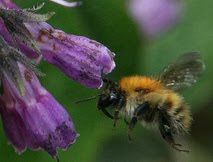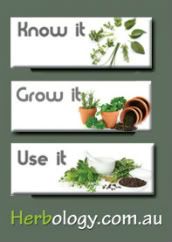Part of my theoretical task for January, with my Springfield Sanctuary Apprenticeship, is to research the structure of human blood cells and then describe how horsechestnut may help strengthen them.
There are three main types of blood cells:
1- Red blood cells, also called erythrocytes. They account for about 40% of the blood’s volume. The red blood cells contain a protein called hemoglobin, which gives blood its red color. The hemoglobin enables the blood to carry oxygen from the lungs to all tissues of the body. These red blood cells also carry carbon dioxide away from the tissues, back to the lungs where they are exhaled.
When the number of red blood cells is too low, (anemia), fatigue and weakness develop because the blood is carrying less oxygen. When there is too high a count of red blood cells, (polycythemia), blood can become too thick, which can increase the risk of strokes or heart attacks, because the blood may clot more easily.
2- White blood cells, also called leukocytes. There are less of these cells in the blood. There is a ratio of about 1 white blood cell to every 600-700 red blood cells. The white blood cells main function is for defending the body against infection. There are five main types of white blood cells:
A. -Neutrophils. They are the most numerous. They kill and ingest bacteria and fungi and other foreign debris, thus helping protect the body against infections.
B. -Lymphocytes- T lymphocytes and natural killer cells.
They help protect against viral infections and can detect and destroy some cancer cells.
B lymphocytes. they develp into cells that produce antibodies.
C.- Monocytes. The help defend against many infectious organisms and ingest damaged or dead cells.
D. – Eosinophils. The destroy cancer cells, are involved in allergic responses, and kill parasites.
E.- Basophils. They also participate in allergic responses.
When the number of white blood cells is too low, (leukopenia), there is a greater likelihood of infection. When the number is too high,(leukocystosis), it can indicate a disease, such as leukemia or an infection.
3.- Platelets, also called thrombocytes. These are particles that are cell-like, but smaller than the red or white blood cells. There is about 1 platelet to 20 red blood cells. These platelets help in the clotting process. They gather at a site that is bleeding and clump together, forming a plug that helps seal the blood vessel. They also release substances that help promote clotting. When their numbers are low (thrombocytopenia), abnormal bleeding and bruising become more likely. When their count is too high, thrombocythemia, blood may clot excessively, causing a heart attack or stroke.
Here is a link to an interactive simulation of a cell, if you are curious to know the structure and functions of the individual components.
An Italian medical botanist, Mathiole in 1565, first described horse chestnut’s botanical properties. By the 18th. century in Europe, it was being widely used. A French researcher, Artault de Vevey, in 1896, reported on it being helpful for the health of blood cells.
These helpful benefits of horse chestnut, are from a variety of constituents, but mainly a group of saponins known as aescin, which has anti inflammatory properties. Aesin also strengthens the walls of the veins and arteries, giving it vasoprotective properties. It also has bioflavonoids, including proanthocyanidins, a subclass of flavonoids, which are renowned for their antioxidant activity.
Horse chestnut strengths the capillaries and supports normal blood flow. It also supports the normal exchange of fluids through cell membranes. The condition of capillaries are improved with use of horse chestnut extract as it reduces the presence of elastase and hyaluronidase, enzymes that break down protein. The blood is thinned by impairing the action of platelets with horse chestnut extract. Taken orally, it is effective in the treatment of chronic venous insufficiency, a condition which prevents decoxygenated blood from being pumped back to the heart effectively. Swelling of the legs and ankles, due to pooled blood, is a symptom of venous insufficiency. A trauma to the leg is a common trigger of this condition. Women are more susceptible than men to this.
Horse chestnut may be effective treatment for varicose veins and hemorrhoids and spider veins due to its vasoconstricting properties.
There are standardized formulas for taking horse chestnut internally. Do do not consume any part of the tree, flower, seed or bark in it’s raw state because it contains a toxin substance called esculin. It should not be taken by people with a clotting disorder or on medication such as warfarin or heparin or asprin therapy as it contains hydroxycoumarin, a component of the herb that possesses anticoagulant activity. It can lower blood sugar, so diabetics should only use under the supervision of their physician. Also, pregnant or nursing women or children should not use this herb internally as there is not enough research available.
Externally, it can be made into a salve to be helpful with bruises, spider veins, and the dark circles you might get under your eyes.
Horse chestnut, Aesculus hipposcastanum, is not a native plant to my area. I will have to search and see if I can find one planted in any of the parks. Our native Aesculus, is Aesculus glabra, Ohio Buckeye. I suspect that I could make a salve from it to use safely. I will have to report back on my success on finding an actual horse chestnut or if I decide to make a salve from the Ohio Buckeye. So the practical task is on hold for the time being.
Herbal and Honey Hugs to all who visit Comfrey Cottages xx
resources: Merck Manual Home Edition online
SkinStore.com
Mosby’s Handbook of Herbs and Natural Supplements













5 comments:
An interesting task sis,in Summer I have the Horse chestnut spray and tablets in my handbag. Especially as it is warm , I have problems with my legs , and the chestnut helps.
Hugs XXXX
What a good share, sis! I am glad the chestnut helps you. I hope I find a tree! love you!!! xxx
Wow, busy learning (and teaching) again. I have a very old"conker" tree in my garden. I also saved lots of "conkers" in autumn from the tree. They are very hard now, but I'm sure they are fine for tinctures etc. I will send you some if you can wait for posting? Email me. I wrote a few posts about horsechestnut conkers.
I hope you can share more information about it soon. This is something helpful that all of us are waiting for. Keep sharing!
Loved reading thiss thank you
Post a Comment